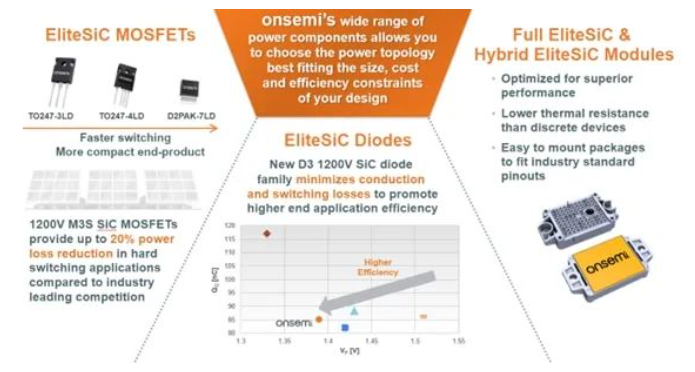In this article, we will take an in-depth look at the SiC design support ecosystem and explain how to provide comprehensive support from product portfolio, design and simulation to materials and supply chain management from the perspective of a semiconductor company.
A few years ago, designers relied primarily on basic information manuals and their own knowledge to select and integrate components into designs. Today, with the rapid development of technology and increasingly fierce market competition, many semiconductor companies have realized that designers are under tremendous pressure in order to bring complex designs to market in increasingly shorter time periods. Therefore, it has become crucial to establish a complete ecosystem of design support tools to help designers perform design work more efficiently.
The same is true for SiC, an emerging technology. SiC is widely used in emerging high-power conversion applications such as electric vehicles and renewable energy due to its excellent performance. However, many people still view it as a "new" technology and believe that its supporting ecosystem is not yet complete. In fact, a sound SiC support ecosystem needs to include the following key elements:
SiC product portfolio
In any ecosystem, the initial key is the available product mix. The SiC product portfolio is generally limited to MOSFETs and diodes. For example, ON Semiconductor's EliteSiC product line covers more than 120 diodes of various types with operating voltages up to 1,700V, as well as more than 100 650V, 900V and 1,200V SiC MOSFETs and more than 30 models based on ON Semiconductor's own SiC Power Integrated Modules (PIM) for MOSFETs and diodes. In addition, there are some key devices, such as gate drivers (such as NCP51705), which play a vital role in ensuring that SiC devices operate normally and perform ideally.

Figure 1: ON Semiconductor EliteSiC products
Design and Simulation
It has become an industry practice to use SPICE models for computer simulation when building any form of hardware. In order to support simulation, many semiconductor companies provide physically-based scalable SPICE models and simulation tools for their SiC devices. For example, ON Semiconductor provides scalable physics-based SPICE models and Elite Power simulation tools for EliteSiC devices. Use these tools to accurately model how a circuit behaves in a simulation environment, helping designers better understand a circuit's performance and optimize its design. In addition, ON Semiconductor has developed a PLECS model generation tool for system-level simulation, which supports engineers to create customized high-fidelity PLECS models for hard switching and soft switching applications.
Figure 2: How to choose Elite Power simulation tool and PLECS model self-service generation tool
Materials and supply chain
Although building SiC devices can be challenging, product reliability and high quality can only be ensured through comprehensive, in-depth manufacturing understanding and rigorous production monitoring. ON Semiconductor has end-to-end supply capabilities, including a series of manufacturing processes such as growing single crystal SiC materials, producing wafer substrates, growing thin epitaxial layers, device processing steps and packaging products. In addition, ON Semiconductor has developed a comprehensive cross-functional approach to evaluate its SiC products. This approach is based on rigorous design methods, strict production monitoring, manufacturing controls, appropriate screening and robust certification to ensure product reliability.
Figure 3: ON Semiconductor’s end-to-end supply chain
in conclusion
Although SiC technology is relatively new, it is already widely used in applications such as electric vehicles and renewable energy. To fully exploit the potential of this technology and provide comprehensive support to designers, semiconductor companies need to establish a comprehensive design support ecosystem. This not only involves providing a rich and diverse SiC product portfolio, design and simulation tools, but also requires vertical integration of materials and supply chains to ensure product reliability and high quality. In this way, semiconductor companies can help designers bring complex designs to market faster while improving product performance and quality.
you may be interested:

